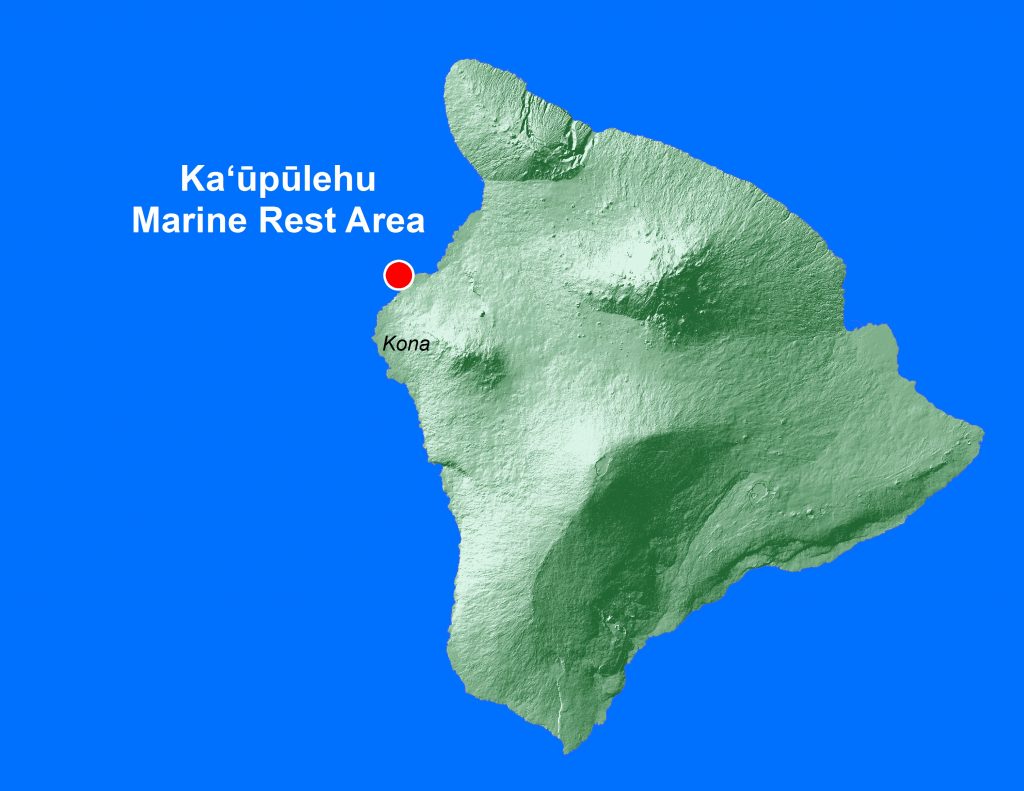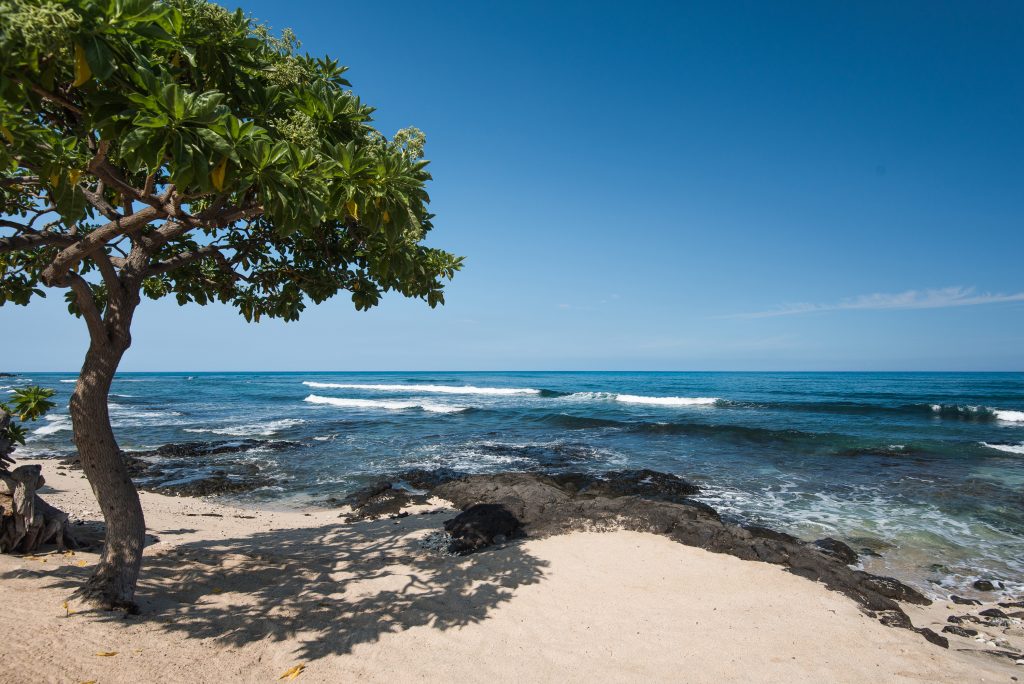‘Try Wait’ Area Helping Reef Fish Recover
The fish populations at the Kaʻūpūlehu Marine Reserve on the North Kona coast of Hawaiʻi Island are beginning to respond, just two years into a 10-year waiting period.
Some species have already increased more than 60%, according to recent dive surveys by The Nature Conservancy (TNC) in an April 2019 press release.
“We’ve been hearing from long-time fishermen that the area is starting to remind them of ‘old Hawai‘i,’” said Leina‘ala Lightner, a lineal descendent of Kaʻūpūlehu and curator of the Ka‘ūpūlehu Interpretive Center at Kalaemanō. “Divers who came to our invasive fish removal event last summer said they were seeing big schools of weke, pualu, uhu and manini, as well as healthy coral, limu, ‘opihi and wana. Many of them shared that seeing the recovery completely changed their opinion of the rest area and community-based fishery management.”
Chad Wiggins, Hawai‘i Island marine program director for TNC, said the organization’s 2018 surveys supported what community members were seeing.
“On more than 183 dives over seven miles of coastal reefs, we observed more fish—fish we hadn’t seen in the area before—and bigger fish. While it is too early to determine the long-term effects of the rest area, these signs of recovery show promise for the community’s goal of supporting a sustainable subsistence fishery in the region.”
Baseline surveys conducted from 2009 to 2016, before the rest area began, demonstrated no difference in reef fish communities inside and outside the rest area. But an analysis of TNC’s September 2018 monitoring data shows that populations of some resource fish, including prized species of wrasses, parrotfish and surgeonfish, are increasing and that increases inside the rest area are higher than in adjacent areas.
Specifically, the surveys found:
• 62% increase in some wrasses (i.e., hogfish) inside the rest area, and 3% outside
• 30% increase in some parrotfish (i.e., uhu) inside the rest area, and 3% outside
• 46% increase in some surgeonfish (i.e., kole) inside the rest area, and 21% outside
• Evidence of spillover, or fish populations increasing just outside the reserve boundary
In addition, coral surveys documented stable or slightly increasing coral cover following the mass bleaching event from 2015 to 2016 that saw high ocean temperatures kill an average of 50% of the coral in West Hawai‘i. This is another indicator that reducing impact on an area can help promote reef resilience.
“The reef resilience survey findings we completed last year showed that reefs with the most recovery from the coral bleaching events are in areas with limited exposure to human impacts,” said Wiggins. “Resilient reefs can resist or recover from stressors, such as warmer ocean temperatures, land-based pollution or high fishing use.”
The initiative to rest the reefs of Kaʻūpūlehu was dubbed Try Wait and led by the Ka‘ūpūlehu Marine Life Advisory Committee (KMLAC). This committee is comprised of kūpuna (Hawaiian elders), Office of Hawaiian Affairs, Kamehameha Schools, Kona Hawaiian Civic Club and local kamaʻāina (landowners and lineal descendants who have been observing fish declines for decades).
In 2009, they invited scientists from TNC to conduct coral reef and fish surveys at Ka‘ūpūlehu and neighboring Kūki‘o. TNC’s scientific monitoring documented the decreases in important food fish that community members were observing. The community led a rule-making process to rest the reef for 10 years to replenish depleted fish stocks to levels that could support sustainable harvest. After numerous public meetings, the Department of Land and Natural Resources created the Ka‘ūpūlehu Marine Reserve in July of 2016.
“Auntie Lei is right, it’s better than it was three years ago, but not like I remember when I was a kid— not yet,” said Kekaulike Tomich, a fisherman from the area. Scientists agree. “This is preliminary data and these fish have a long way to go before they are fully recovered,” noted Dr. Eric Conklin, Hawai‘i director of marine science for TNC. “But after decades of documenting decline for highly prized food fish like uhu (parrotfish) that are so important in keeping reefs healthy, it’s a big step in the right direction.”
Resting an area is one of the best ways to increase fish populations in coral reef ecosystems, with populations of certain species needing years to recover. During the remaining seven years of the rest period, KMLAC and community members will continue their resource management efforts and work with the State to develop a fisheries management plan to guide sustainable harvest once the area reopens.
Recent science shows that populations of some of the most popular reef fish in Hawai‘i have declined by up to 90%. To address this decline, the State Division of Aquatic Resources (DAR) has committed to effectively manage 30% of Hawai‘i’s nearshore marine environment by 2030 through its Marine 30×30 Initiative.
The Marine 30×30 Initiative aims to increase health and abundance across Hawai‘i’s nearshore waters by collaborating with communities and other stakeholders to develop management strategies for specific marine areas, modifying fisheries rules based on current knowledge and traditional practice, increasing education and enforcement and improving monitoring of marine resources and management actions.
“The results at Kaʻūpūlehu are very promising in terms of what can be achieved through the Marine 30×30 Initiative,” said Brian Neilson, Administrator of DAR. “By increasing public awareness and engaging our communities and fishers to find solutions to the many threats facing our oceans, we have the best chance of restoring thriving fisheries and healthy reefs that can feed our families into the future.”


















